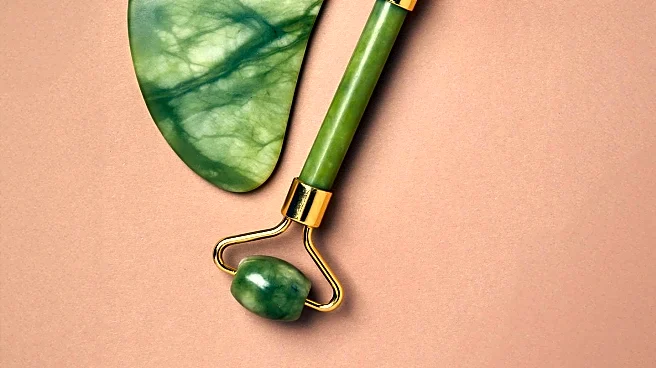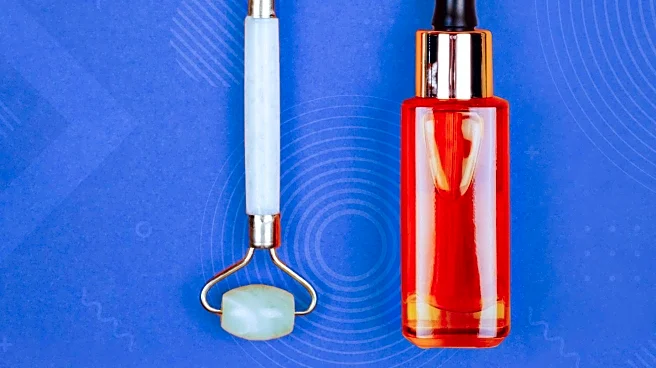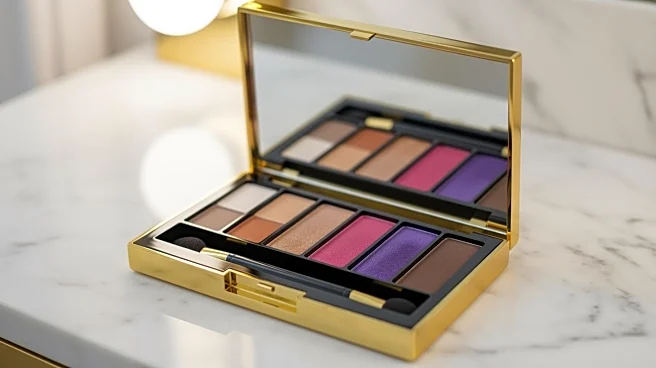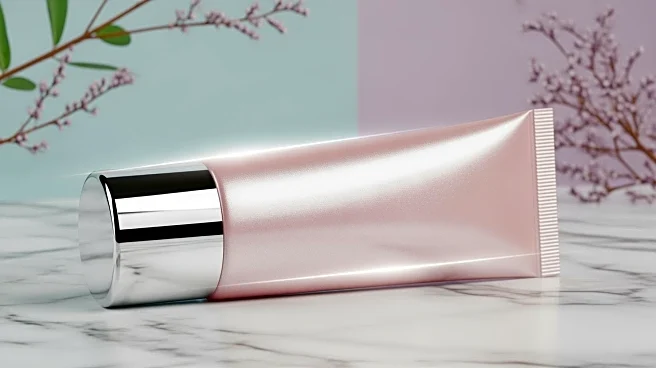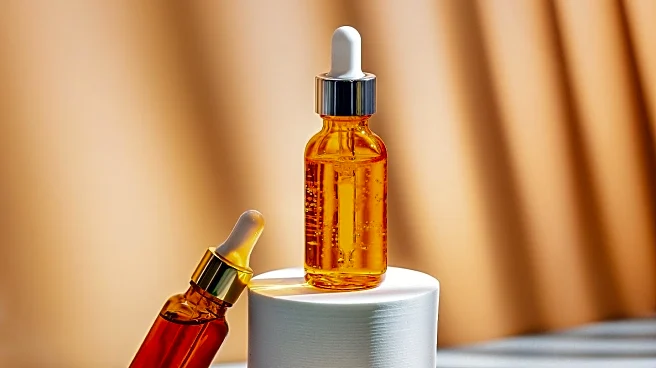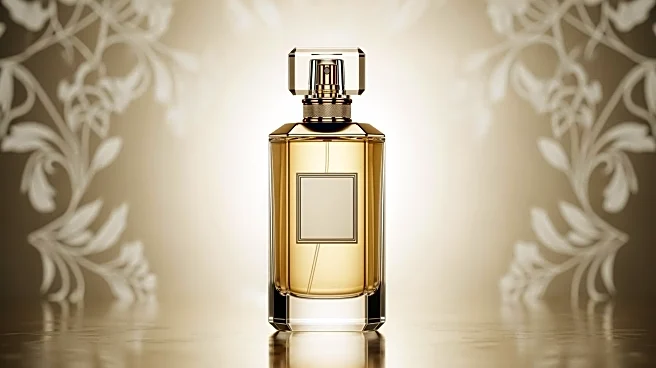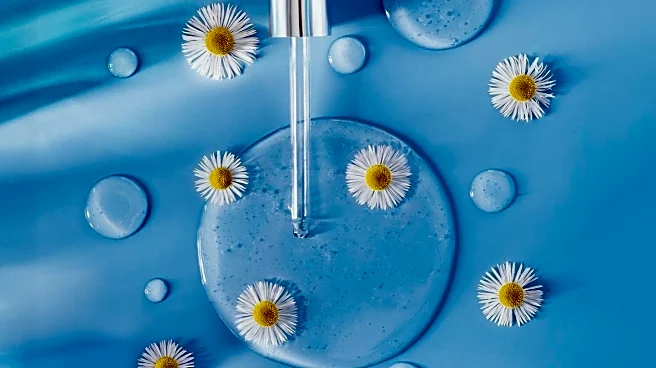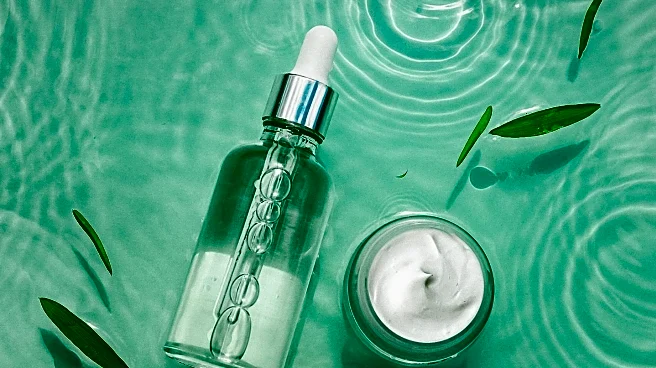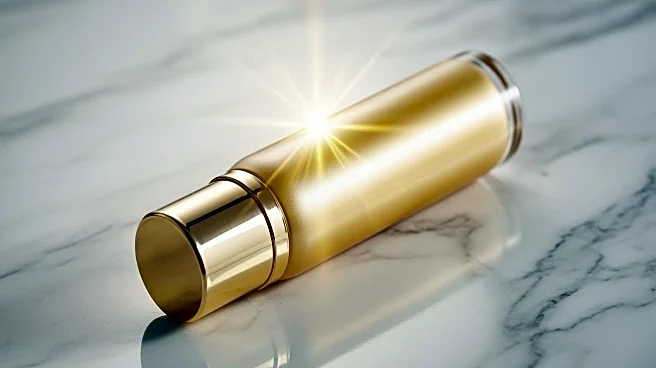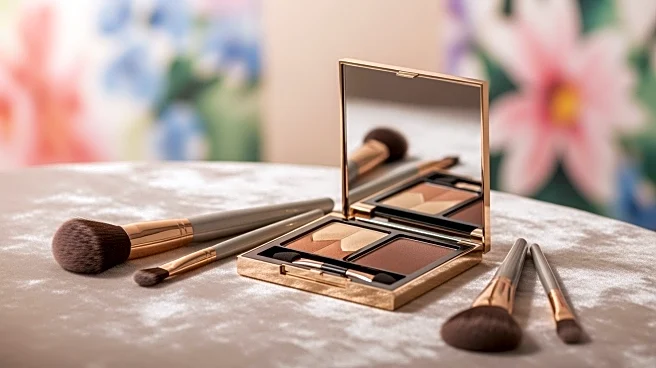What's Happening?
Gua sha, a traditional Chinese medicine technique, is gaining popularity in skincare for its potential to improve facial health and aesthetics. The practice involves using a smooth-edged tool, typically made of minerals like quartz or jade, to massage
the skin. This technique is believed to enhance circulation and blood flow, leading to a clearer complexion. Dermatologists like Pooja Rambhia, MD, and Marisa Garshick, MD, highlight its benefits, including improved circulation, lymphatic drainage, increased product absorption, and smoother skin texture. While clinical data on its effectiveness is limited, many users and some dermatologists report positive outcomes, such as reduced puffiness and a more sculpted appearance.
Why It's Important?
The growing interest in gua sha reflects a broader trend towards non-invasive skincare techniques that promise aesthetic improvements without the need for surgical interventions. This trend is significant for the beauty industry, as consumers increasingly seek affordable and accessible methods to enhance their appearance. The potential benefits of gua sha, such as improved circulation and lymphatic drainage, align with consumer desires for natural and holistic beauty solutions. Additionally, the practice's ability to enhance product absorption could drive sales of complementary skincare products, benefiting the cosmetics market. However, the lack of extensive clinical evidence means that consumers should approach these claims with cautious optimism.
What's Next?
As gua sha continues to gain traction, further research may be conducted to substantiate its claimed benefits. The beauty industry might see an increase in the development and marketing of gua sha tools, as well as educational content on their use. Dermatologists and skincare professionals may also explore integrating gua sha into their treatment offerings, potentially leading to collaborations with beauty brands. Consumer demand for evidence-based results could drive more rigorous studies, which may either validate or challenge the current anecdotal support for gua sha. The trend towards holistic beauty practices is likely to persist, influencing future innovations in skincare.
Beyond the Headlines
The rise of gua sha highlights a cultural shift towards embracing traditional and alternative medicine practices in modern beauty routines. This trend underscores a growing appreciation for ancient wellness techniques and their potential applications in contemporary contexts. Ethically, the promotion of gua sha raises questions about cultural appropriation and the importance of respecting and acknowledging its origins in Chinese medicine. As the practice becomes more mainstream, it is crucial for brands and practitioners to honor its cultural heritage while educating consumers about its proper use and benefits.
